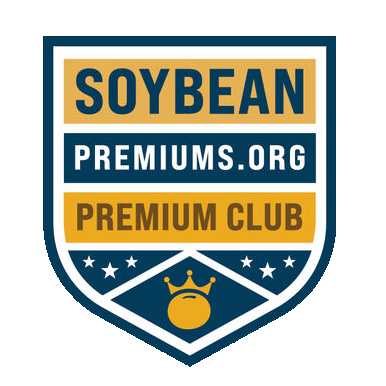Copyright © 2019 SoybeanPremiums.org All Rights Reserved
Farmer Resources
Programs
Find a Premium Program nearest you today. Start by choosing your desired state to filter the Premium Soybean Programs.
This program information is provided by the companies listed here. ISA does not independently verify or vouch for the accuracy of this information. Questions about a program should be directed to the company rather than ISA.
This program information is provided by the companies listed here. ISA does not independently verify or vouch for the accuracy of this information. Questions about a program should be directed to the company rather than ISA.
Find a Sweet Spot Growing Food Grade Soybeans
Dairy alternatives, or plant-based foods, are one of fastest growing food sectors. Consumers increasingly are trying almond or soy beverages instead of cow’s milk, for example. And the market is only going to grow, according to the Specialty Soya and Grains Alliance.
Globally, the group notes South Asia, especially, is poised for soy-based dairy analogue product growth, given health benefits of soy, an increasing vegetarian/vegan population, environmental consciousness and higher milk prices. The North Asia market for soyfoods and ingredients also is expanding and currently is valued at more than $2 billion. The Alliance anticipates a compound annual growth rate of 10 percent in that region during the next five years.
And while many soyfoods can be produced from commodity soybeans, the Alliance reports foods taste better and fulfill specific food property demands when they are manufactured from food grade varieties grown, harvested and shipped separately from commodity soybeans.
Handling also is different. Sales are typically buyer's call, which means farmers deliver their segregated contract soybeans from their bins to processors when requested by the buyer. A high priority is placed on traceability, so buyers know every step of the process from the producer.
Several farm publications have written good articles about food grade soybean production. This article shares information from participants in the food grade soybean trade.
Likewise, here’s a review of soybean varieties produced for food grade markets and their end uses. Most are turned into tofu or tempeh, but several other niche markets exist. For example:
- Natto beans are small-seeded soybeans typically used for fermented soyfoods. The beans have a clear hilum, thin seed coat and high carbohydrate levels. Natto is popular in Japan.
- Tofu/clear hilum food grade soybeans with large seed size and high protein levels are primarily used for tofu and soymilk production.
- Triple-null lipoxygenase soybeans lack the three enzymes that produce off-flavors found in conventional soybeans. Triple-null soybeans are used in soymilk and tofu.
- Organic food-grade soybeans are produced using pest management and fertilization methods that do not include synthetic compounds. Growers producing and selling soybeans labeled “organic” must be certified by a USDA-approved agency. The top selling organically produced soy products in the U.S. are tofu and soymilk.
While production practices for food grade soybeans are similar to standard beans, farmers should find a contract that jives with their on-farm capabilities. Contracts can specify fertilizer use, plant population and planting date, as well as harvest, drying and handling practices. Identity preservation guarantees volume and quality are maintained, along with any other designated food grade characteristics. Contamination with other soybeans can negate a contract.
While the food grade market is not for everyone, it does offer a sweet spot for others. Explore the opportunities on SoybeanPremiums.org to see what is available in your area.
By accepting you will be accessing a service provided by a third-party external to https://soybeanpremiums.org/
